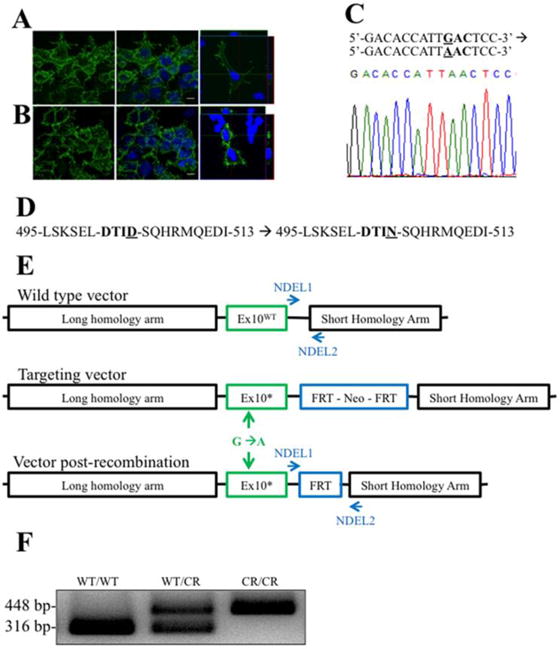Fig. 1. Generation of EAAT2-D504N mice.

(A) EAAT2-WT and (B) EAAT2-D505N comparably localize to the plasma membrane of transfected HEK cells. (C) A single nucleotide point mutation was introduced into the Slc1a2 nucleotide sequence mutation in exon 10 of the Slc1a2 gene, which codes for EAAT2 in rodents. A segment of the sequenced DNA confirming the point mutation is shown. (D) This generates an aspartate to asparagine mutation in the — DTID- caspase-3 consensus sequence of EAAT2. (E) To introduce the point mutation, a targeting vector with the point mutation and an FRT-flanked neomycin resistance cassette (to enable selection of recombined genes) between long and short homology arms was generated. Mice were crossed with FLP mice to recombine the FRT sites, removing the cassette except for one remaining FRT site. (F) The remaining FRT site enabled genotype to be determined by PCR: the wild-type allele is 316 bp and the mutant allele (with the FRT site) is 448 bp, while a mutant allele without recombination is too long to amplify.
